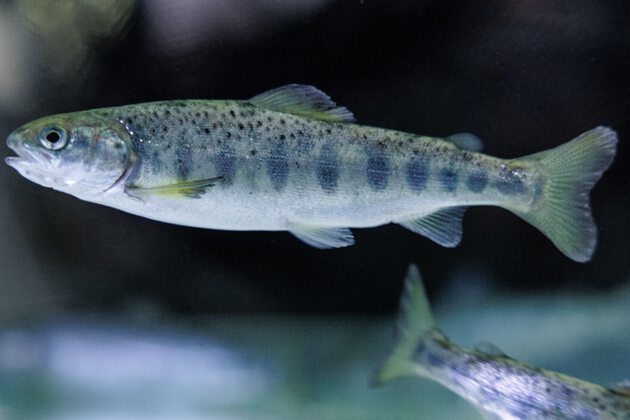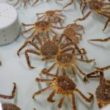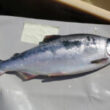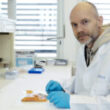Genomics4Robust
Integrating genomics resources for robust fish for the future

Advancements in the use of genomic resources as a tool to improve health and performance hold promise to tackle production barriers in aquaculture. Upgrading competence and mastering of these new emerging genomic tools is essential for Nofima to realize the development of robust fish that can thrive in future environments.
Start
01. Apr 2021
End
30. Sep 2023
Funded by
Nofima
Cooperation
Mowi
In this project, we will build the capability of Aquaculture division to perform state-of-the-art genome analyses and procedures such as spatial and single cell transcriptomics, targeted sequencing and gene editing. Furthermore, genomic data platforms will be established to organize, link and mine genomic resources; and genomic data modeling capacity will be strengthened.
Background
Genomics and its related large datasets have accelerated data-driven research to the point that our future food security is interlinked with it. As a result, there has been increasing interest from researchers and industry in the advancement of genomic resources for several aquacultural species.
Emerging biotechnological innovations, such as the use of genome editing tools to improve health and performance, hold promise to tackle production barriers in aquaculture.
In order to harness these genomic tools, it is important to understand, master, and organize these resources.
Moreover, breeding programs in aquatic species are becoming more sophisticated and enabling genomic tools. Designs for the technical implementation of genomic selection (GS) in all species need to be validated.
In the Aquaculture division, there are several ongoing projects across all departments which could benefit from skills in these emerging genomic tools. Therefore, there is a need to strength our competence in efficient use of genomic resources for solving scientific challenges.
Goal
Genomics4Robust aims to build and improve our competence in integrating genomic resources for the development of robust fish.
Sub goals
- Mastering new and existing genome analysis methods for tackling scientific problems.
- Establishing well documented genomic data platforms, such as genomic databased, bioinformatic pipelines and processes to organize, link and mine genomic resources for different species.
- Strengthening our capacity in genomic data modeling to maintain Nofima in the forefront of the field.
What we do
Genome analysis – Transcriptomics
We will establish new transcriptomic methods in the laboratory, such as spatial and single cells transcriptomics. This analysis will be combined with histology of the selected sample to map cellular features.
Combining spatial transcriptomics and single cell sequencing on the same set of samples would provide very high resolution, with spatial distribution of the transcription pattern within the tissue, combined with resolution at single cell level.
Fish tissue samples for establishment of spatial transcriptomics will be taken from relevant and ongoing projects.
Metabolomics and protein analysis
We aim to develop molecular assays to detect and quantify targeted proteome and metabolome with intentions to improve our knowledge on implications of the genomic variants affecting metabolome and protein expressions.
We also aim to establish a pipeline for metabolomic and proteomic analyses. Fish samples will be taken from ongoing projects.
Gene editing tools
In tight collaboration with the ongoing SIS-GeneEdit, gene editing will be included to gain knowledge of selected marker/candidate genes. The method will constantly be updated according to state-of-the-art improvements.
Gene editing will preferably be done using suitable in vitro cell models.
Candidate genes for editing will be selected during the project for investigation of gene function and establishment for new improved gene editing methods.
Bioinformatics tools
We will build computer pipelines and bioinformatic processes for linking and mining of genomic resources for different aquatic species. Data from relevant ongoing and completed projects will be used.
We will build genomic resource databases with user friendly front ends for the many existing and future genomic datasets.
We will develop a thorough documentation of pipelines, processes and databases to ensure that the bioinformatic developments can be adapted and continuously improved into the future. Also, a list of minimum requirements of information from the respective experiment for the database will be set up.
Genomic data modeling – Developing of Genomic prediction models for different species
We will establish genomic prediction models for several aquatic species and traits using existing datasets. Several methods for genomic prediction strategies will be developed, such as linear genomic models, Bayesian alphabets, machine learning, integrating SNPs and other variants from sequence data, GS models accounting for QTLs and cost-effective GS.
Beyond single generation GS in aquaculture: We will develop genomic models to combine genomic and pedigree data, information from multiple generations and multiple populations (different year classes) for an aquaculture breeding schemes setup.
Publications
Strategic priority areas
Nofima invests its own resources in order to increase competence in useful, relevant and innovative areas and strengthen our position among the leading applied research institutes.





